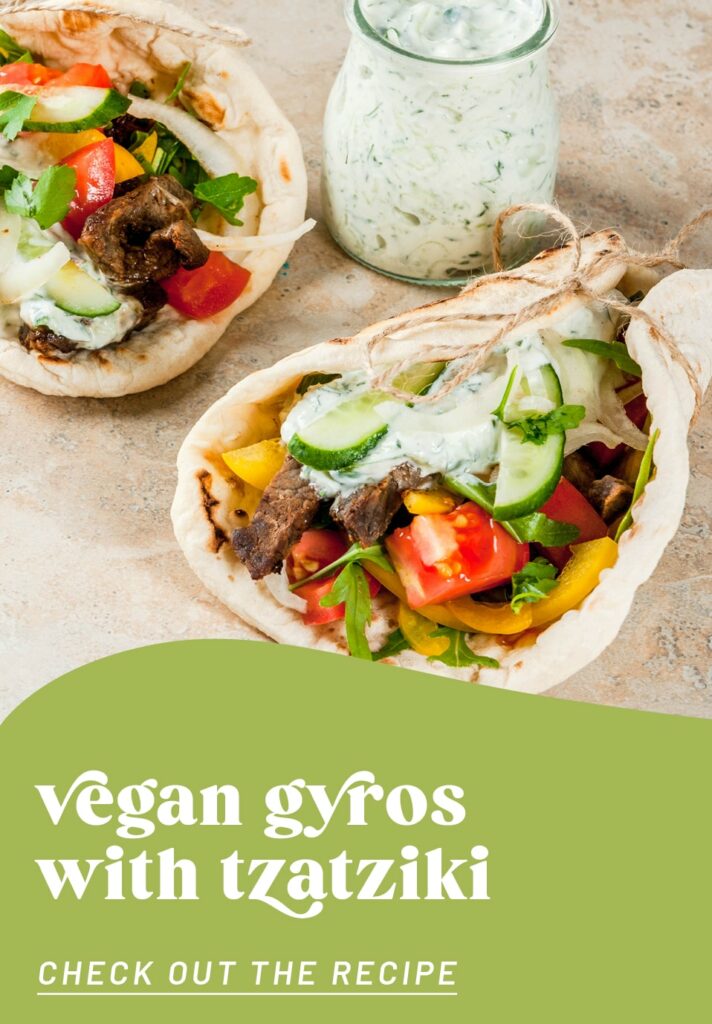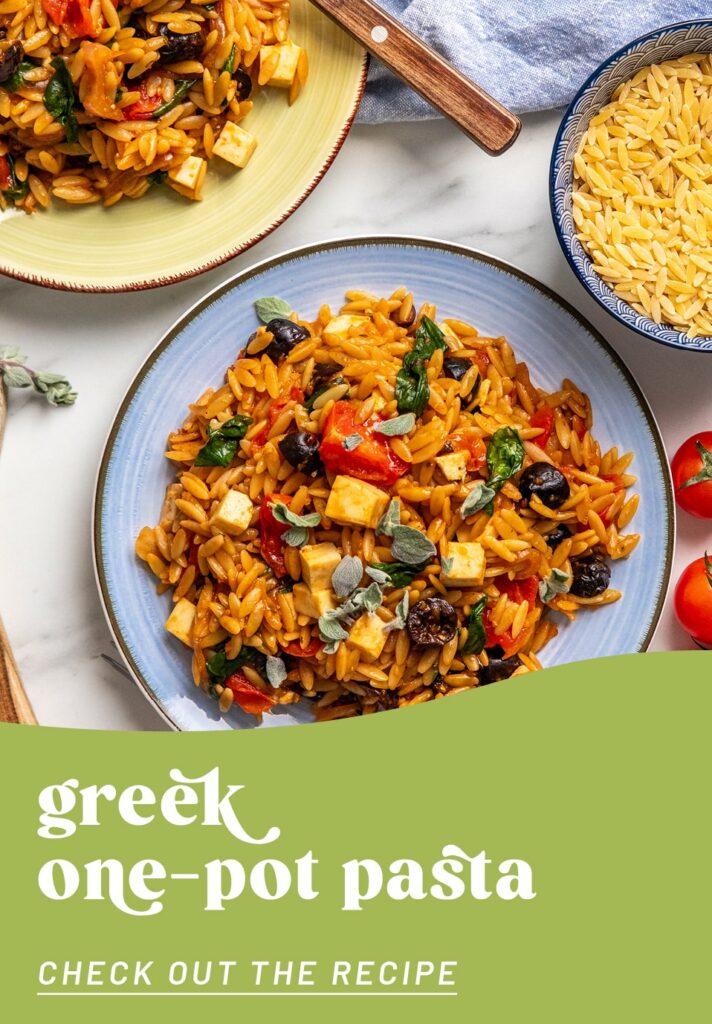VEGAN WORLD TRIP
Plant-based indulgence drenched in Greek sunshine

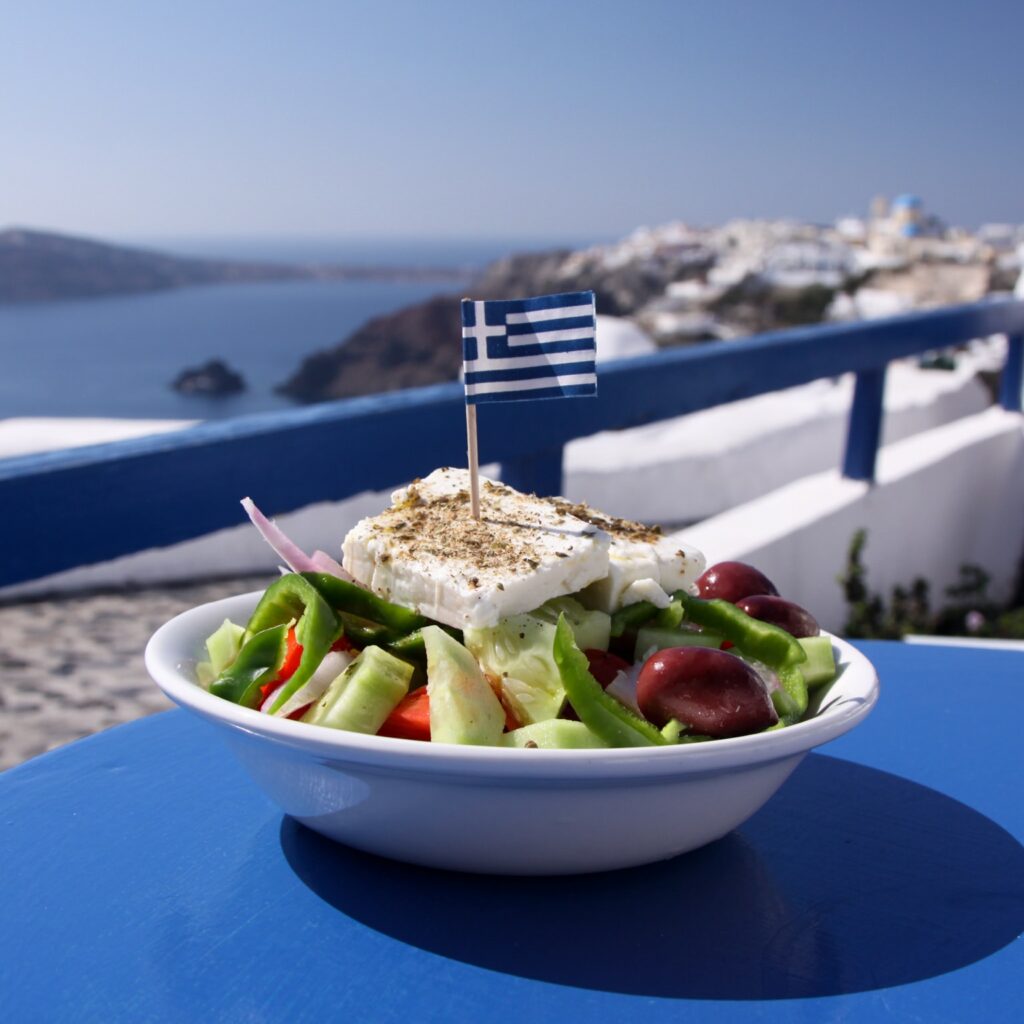
If you thought that Greek cuisine is only about meat and fish, then think again! While meat and fish do of course play a role in traditional Greek cooking, Greece is a surprisingly good country for vegans to vacation in.
Whether you’re in Athens or Thessaloniki, visiting one of Greece’s many picturesque islands, or anywhere else on the mainland of the Peloponnese or Pelion, enjoying plant-based food here is a whole load of fun! We’re here to show you how… And for when you come home and start craving Greek delicacies, we have all the best veganized versions of your favorite recipes.
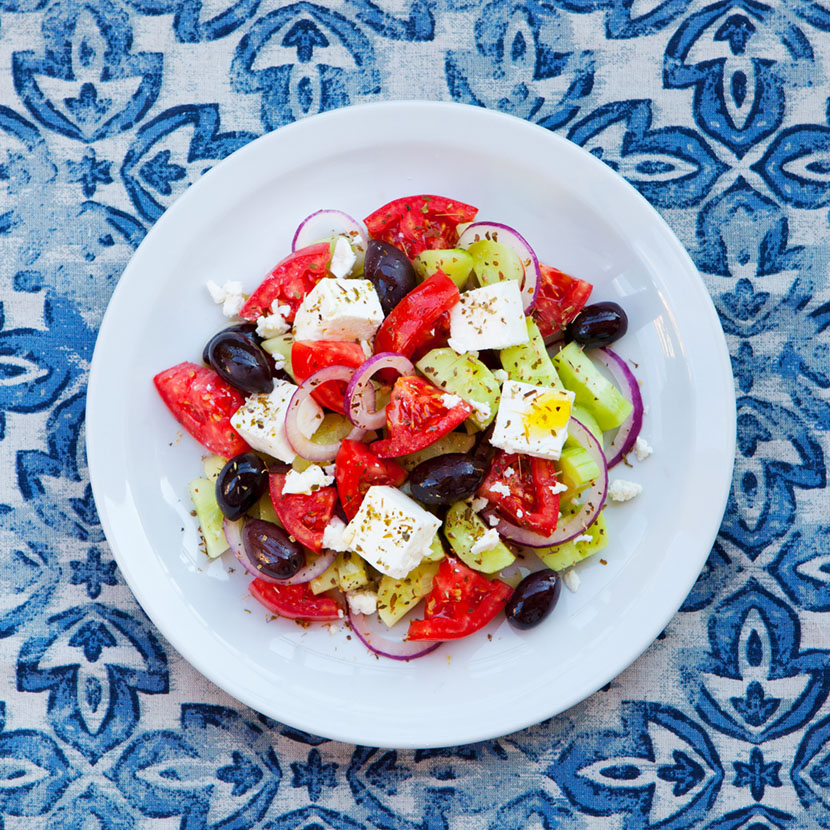

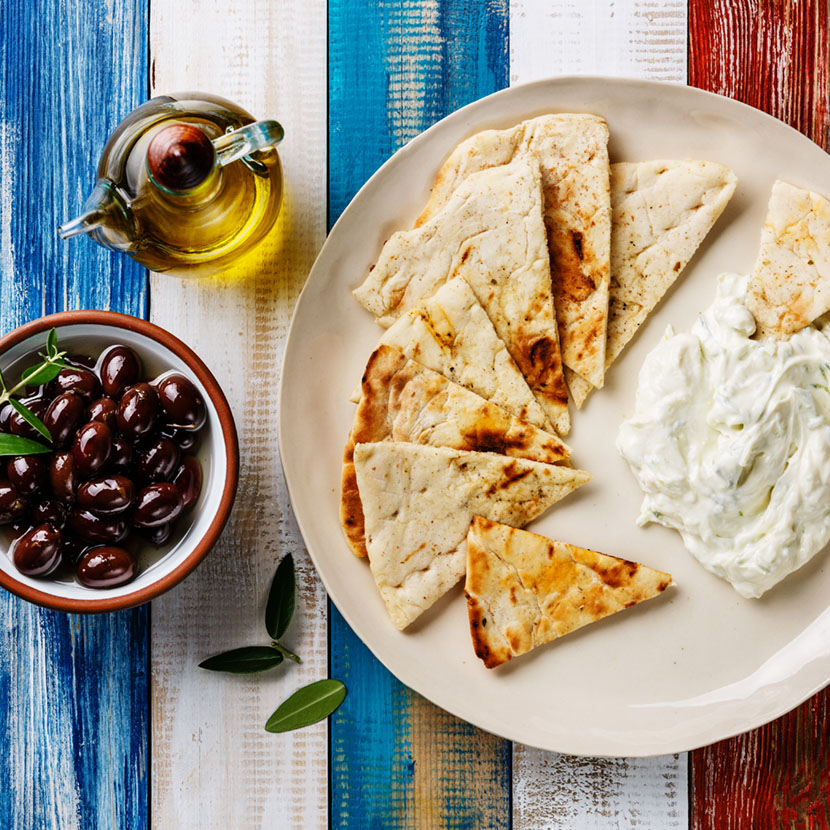
Just like at your favorite Greek restaurant, but vegan
Many fans of vegan food remember indulging in Mediterranean food at their local Greek restaurant before they became vegan. Sometimes they sound a little nostalgic. But Greek food doesn’t have to be just a memory! We’ve brought together the most irresistible vegan versions of your favorite Greek dishes. So if you’re wondering how to veganize gyros, moussaka and many more, you’ve come to the right place!
1. Gyros, vegan style
Firm soy chunks, a vegan alternative to tzatziki, onions, olives, and typical Greek spices make this vegan gyros possible: it has plenty of bite and tastes wonderfully aromatic!
2. We love moussaka: It’s the potatoes, juicy eggplants and meaty soy mince which make this moussaka so delicious! We have two vegan recipes to offer – one classic, and another with a pistachio bechamel sauce.
3. Souvláki: : If you’re in the mood for meaty skewers without the meat, why not try our vegan barbecue skewers? For an even more Greek feel, use a Greek spice mix for your marinade.
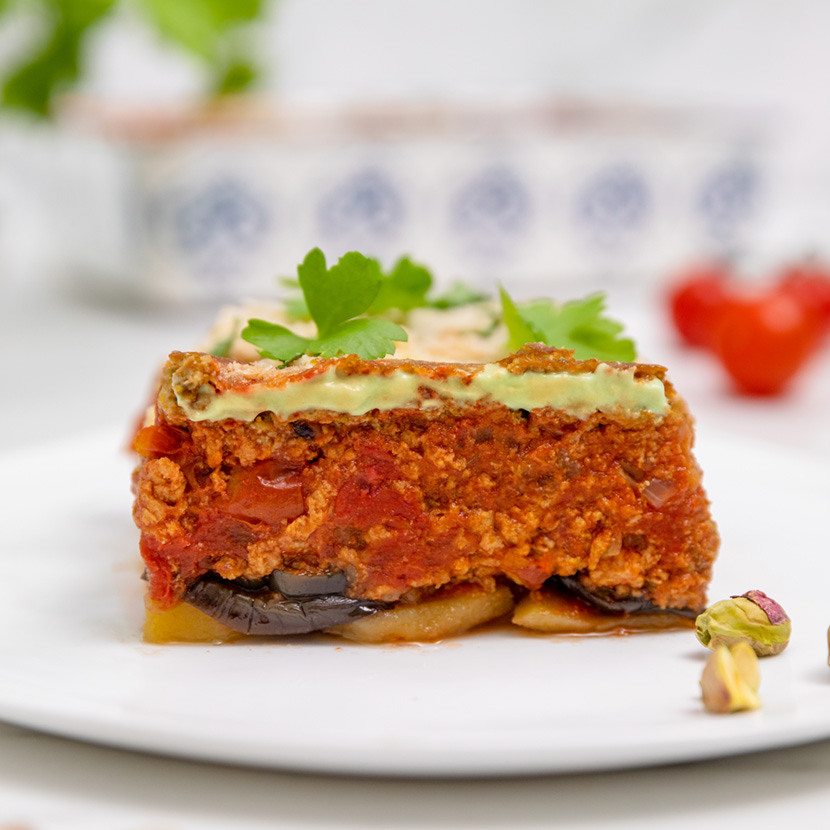
4. Bifteki: Our alternatives to mince are perfect for this Greek classic: stuffed bifteki! The bifteki go wonderfully with tomato rice and herb salad.
5. Greek meze: As is the case in some other Mediterranean countries, Greece has a culture of eating several meze, or starters. You can therefore get small portions of many plant-based delicacies such as chickpea stew, zucchini balls with a mouthful of a name – kolokithokeftedes – as well as tzatziki, tomato spread, olives, and preserved artichokes. Greek mezetaste like a breath of Mediterranean sea air. ;-).
6. By the way, talking of Tzatziki: There is a simple, delicious vegan alternative which pairs wonderfully with many vegan main meals and starters. You really have to try it!
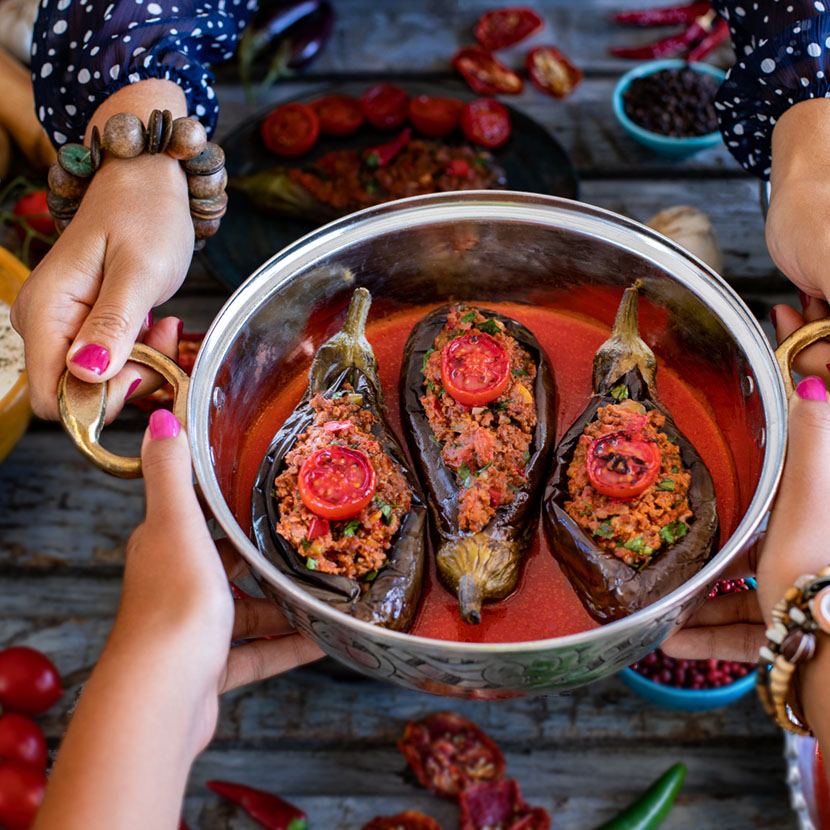
Island or mainland?

Bring on the holiday vibes! Perhaps you’ve been crazy about Greece for some time already. In that case, you’re bound to be familiar with warm summer evenings spent on a terrace beside white and blue houses, in the garden of a rustic tavern, in idyllic fishing harbors, or simply on one of the seemingly endless beaches, looking out over waves lapping gently on the shore. In Greece, you really are spoilt for choice in terms of places to let the sunrays onto your skin and to soak up the Greek way of life with every ounce of your being.
The Greek islands are extremely popular. The scenes we’re imagining really are picture-pretty. Most people have at least heard of the large Greek islands like Crete, with its impressive Minoan culture, as well as Rhodes and Lesbos. But did you know that there are more than 3000 Greek islands? Admittedly, this includes many small, uninhabited isles. But more than 160 islands are inhabited – and each is more beautiful than the last! If you’re yearning to be on an island in the turquoise-blue Aegean Sea, you have the choice of a good 50 different island destinations: there are Cyclades and the Sporades, then the Ionian islands (Corfu, Lefkada, Zakynthos etc.) as well as islands in the Libyan Sea, and some inland islands. Wow!
And we haven’t even got onto the subject of the mainland, which just as worth visiting, if not more so – from the Macedonian provinces in the north (with the “three-fingered” peninsulas of Halkidiki), to Thessaly (home to Mount Olympus and the Meteora monasteries), central Greece, the Attica region around Athens, and the Peloponnese, which is itself a huge peninsula.
Wherever you end up going, and no matter whether you prefer big cities, hiking or relaxing, Greece can offer everything tourists’ hearts desire: sights from the ancient world, colossal natural phenomena, and fabulous hotels along a total coastline (thanks to the countless islands) of almost 14,000km. We suspect you’re getting hungry again, right? Let’s have a look not only at what makes tourists happy, but also at what makes us vegans happy.
Paradise for fans of produce markets
As in all Mediterranean countries, Greek cuisine’s trump card is the freshness of the ingredients it uses. At markets all over the country, you’ll find a symphony of the flavors of crunchy fresh vegetables, fruit, nuts and pulses (especially haricot beans, mungo beans and chickpeas). If you prefer pre-cooked pulses, you’ll find these in supermarkets, alongside tahini (sesame paste), which is very popular here. There are also herbs from the sparsely vegetated mountain regions of the islands, which are famous the world over – not just for making infusions with, but also for using in cooking. Particularly well known are oregano (known here as rigani), thyme, sage, mint and chervil. Dried spices such as paprika, cumin, aniseed, cinnamon and mastic (the sticky resin obtained from the mastic tree) play an important role in Greek dishes, and are what gives gyros and many other dishes their typical flavor.
And while you’re at the market, make sure you get plenty of lettuce, tomatoes, cucumbers and onions, because your Hellas menu won’t be complete without a Greek salad! 😉 To go with it, we recommend one of our feta alternatives, such as with herbs or original. Eggplant salad (Melitzanosalato) is also definitely worth trying. White cabbage and beetroot can also be made into delicious salads.
At the markets (known as “laiki”) you will of course also find legendary Greek olives – ideally with a bottle of extra virgin olive oil to boot. That’s because olive oil is indispensable for Greek cooking – and, what’s more: the prices at the markets are lower than at the supermarkets!

So, as you can see: in Greece, vegetables are your trump card, because meat alternatives are still relatively hard to find. Even in organic food stores, you’ll be lucky to get your hands on tofu. But now, let’s get stuck into some serious plant-based indulgence!
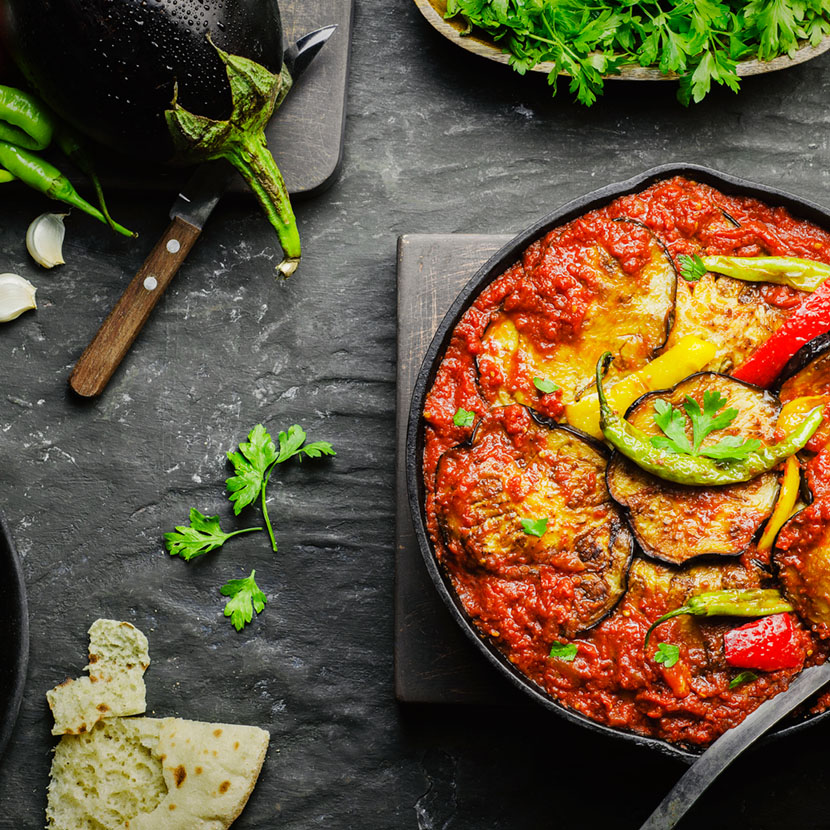
The magic word “nistisimo”
As we’ve mentioned, plant-based food does have a long tradition in Greece. The Orthodox Christian faith plays a role in this, because the church year includes several periods of fasting – in particular before Easter and Christmas – during which people give up meat, eggs, milk, cheese and butter. Even if the rules are either no longer followed, or no longer followed as strictly by younger people, there are traditional fasting dishes in Greek cuisine, which are referred to as “nistisimo”. Just when it comes to honey and seafood, it’s best to always ask – because these are allowed during periods of fasting.
The magic word “nistisimo” will always come in handy – especially if the menu is all Greek to you, meaning you can’t decipher the ingredients list. Fortunately, Greek people are very friendly and are always happy to help you if you approach them politely. In addition to making culinary discoveries, having contact with the locals really is a joy! So, without further ado, it’s now time for us to present to you the all-time top plant-based recipes from Greek cuisine:
Our 11 favorite Greek veg dishes
1. Fasolada – a plant-based national dish
Greece without this bean soup wouldn’t be Greece. Pulses really are the stars of the show in this simple but full-bodied soup, which also features spices and tomatoes. Make sure to check that your soup was prepared without meat stock, as is traditional, and you have the green light to enjoy this national dish which has filled the tummies of many a generation of Greeks!
2. Fasolakia – bean and tomato stew
If you’re looking for something a bit more substantial, why not try beans in the form of this hearty stew?
3. Dolmades – stuffed vine leaves
Stuffed vine leaves do sometimes contain meat – but you can also get them with plant-based fillings such as rice and pine kernels, served in a delicate broth.
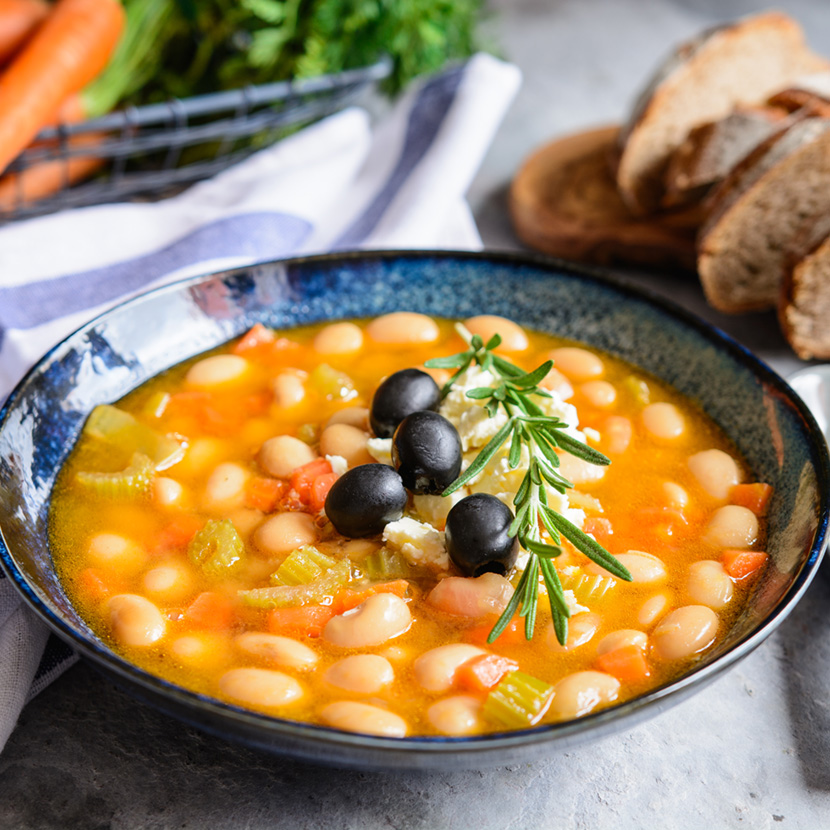
4. Santorini tomato fritters – Tomatokeftedes
These tomato fritters are a favorite of the Greek islanders. The dish is originally from the enchanting island of Santorini. It’s said that thanks to the volcanic soil in which they grow, Santorini tomatoes have a particularly piquant aroma and a great deal of nutrients. You should definitely make sure you use good quality tomatoes for these delicious fritters. Tomatokeftedes are a type of starter the Greeks refer to as “meze”.
5. Gemista – nothing beats stuffed veg
Yet again, tomatoes feature in the starring role. Or, depending on your preference, you could use peppers. Gemista means “stuffed”, and stuffed veg is what the dish is all about. Filled with a vegan stuffing of veg, rice and herbs, your Gemistas need to be cooked in tomato sauce in the oven. It’s said that there are as many variations on Gemistas as there are taverns in Greece. Well, just make sure you don’t get one with a meat filling! Eggplants are also great for stuffing! These are known as Imam Bayildi. Once again, you can let your imagination run riot!
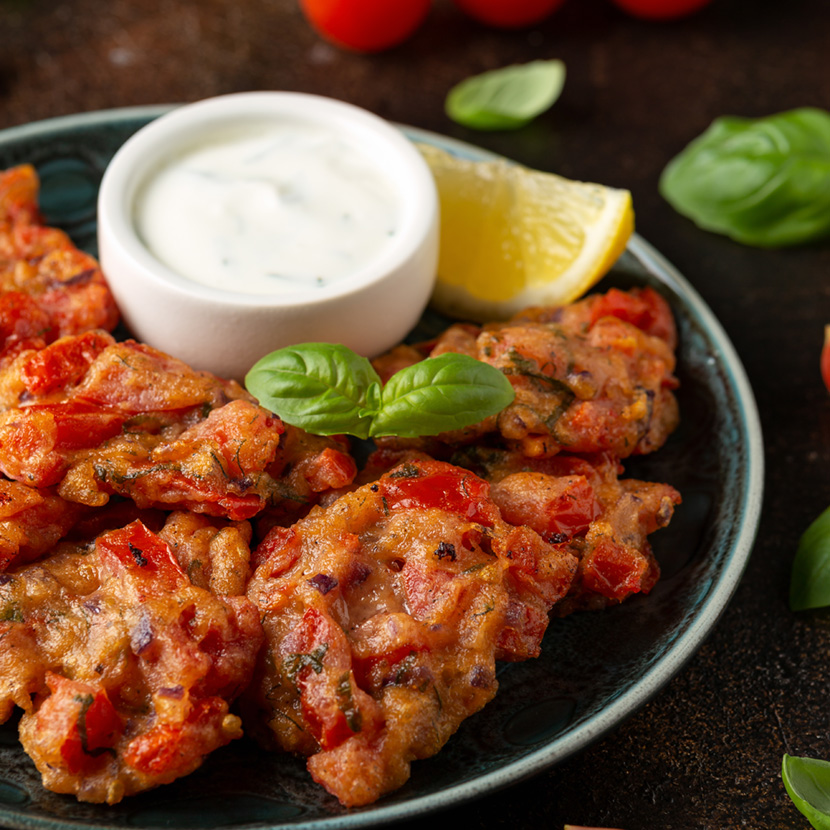
6. Briam – Oven-roasted veg with oodles of olive oil
You’ll find Briam on the menu in some Greek restaurants. When you do, you can look forward to wonderfully crispy roasted vegetables – they go wonderfully with pita bread and a vegan alternative to feta.
7. Fava, a variation on houmous made from yellow lentils or beans
Bound to be a firm favorite with fans of pulses! Depending on the recipe, you can use yellow peas, shelled peas, yellow or red lentils, or beans (broad beans, fava beans, horse beans, tickbeans, Windsor beans).
8. Patates Fournou
is the name given to baked potatoes in Greece.
9. Gigantes Plaki
are jack beans cooked in a tomato sauce, often served as a starter. The dish gets its special aroma from celery, garlic, red wine vinegar and cinnamon.
10. Kritharaki
Fancy trying pasta – Greek-style? If so, it’s time for a taste of Kritharaki. The dish, which is made using a special type of rice pasta, might remind you of paella. If you choose feta alternative as a topping, then the dish is naturally vegan.
11. Pita
If you need to rustle something up in a hurry, pita ticks all the boxes. This wonderful flatbread can be served vegan – filled with tomatoes, onions and fries. Simply ask for a pita nistisimo, and you’ll get one without meat or feta.
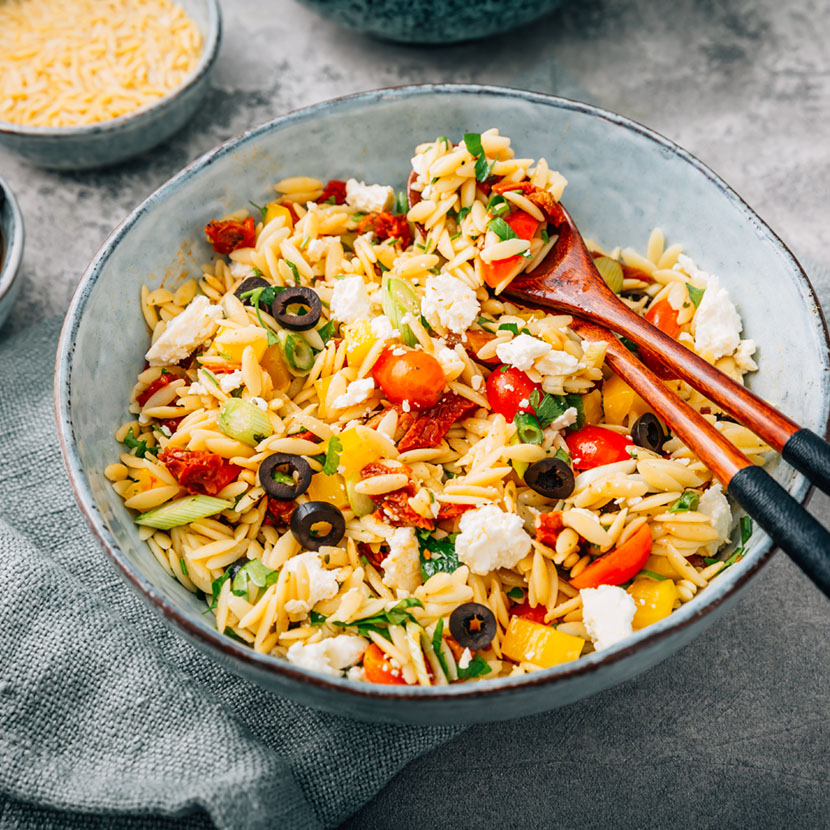
Baklava: sweet temptation

Delicate, crispy, rich and sweet – baklava is known all over the Mediterranean. In our opinion, the Greek version is even nuttier and – thanks to an extra portion of syrup – very moist and sweet. This popular dessert is made from layer upon layer of filo pastry, and can contain chopped walnuts, pistachios or other nuts. Unlike in Turkey, where sugar is used, the syrup in Greece is usually made from honey. Of course, we’ve thought up a vegan variation without honey. Greek bakeries also offer other baked goods and cookies which can be vegan. Simply ask for the nistisimo options (and specify that you want things without honey!).
Another irresistible dessert that you really need to try the vegan version of is the wonderfully crispy, creamy Galaktoburiko: a specialty featuring puff pastry and a semolina custard – so a cross between a pastry and a pudding! But enough description – why not taste it for yourself?! 😉
Another piece of good news for everyone who loves Greek yogurt with walnuts and honey (which tastes great for breakfast, dessert or at pretty much any time of day) is that at Velivery, you’ll find the fantastic Greek style yogurt alternative in three flavor varieties, as well as walnuts and alternatives to honey.
If you fancy a coffee with a plant-based drink, it’s worth knowing that the milk alternative of choice in Greece is almond drink. Unfortunately, it’s often quite expensive. You’ll have better luck if you order from Velivery 😉
Make sure your wine is as vegan as it is Greek!
In Greece itself, this can be a challenge. So, if you’re on the lookout for a full-bodied red or drinkable white, have a browse in our online shop. Some of you will be glad to hear that you can find meat alternatives for making gyros, moussaka and other dishes, as well as fantastic Greek-style cheese alternatives, because products like these can be hard to find in Greece.
So, once you’ve got all you need and nothing more stands in the way of your Greek-themed dinner, all that’s left to do is to put on some sirtaki music, perhaps raise a glass of ouzo (the good news for all aniseed fans is that ouzo is vegan!) and in no time, you’ll feel like you’re on vacation in Greece! You can almost hear the waves lapping on the shore! 😉

The Recipes
Enjoying great Greek vegan food really is child’s play. Allow us to show you how! Three different Greek dishes, each as delicious as the next:
